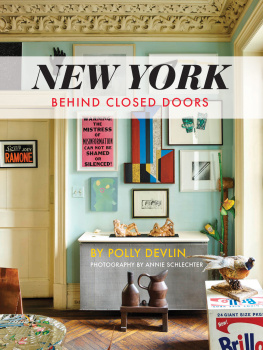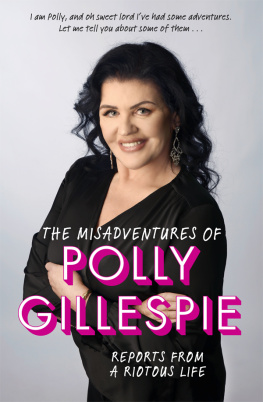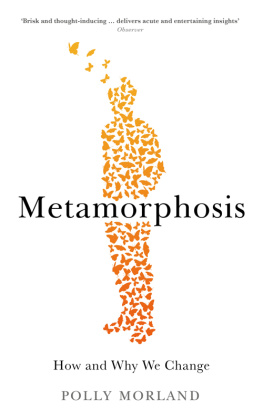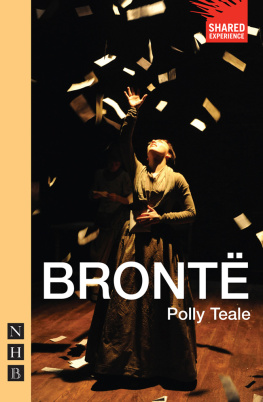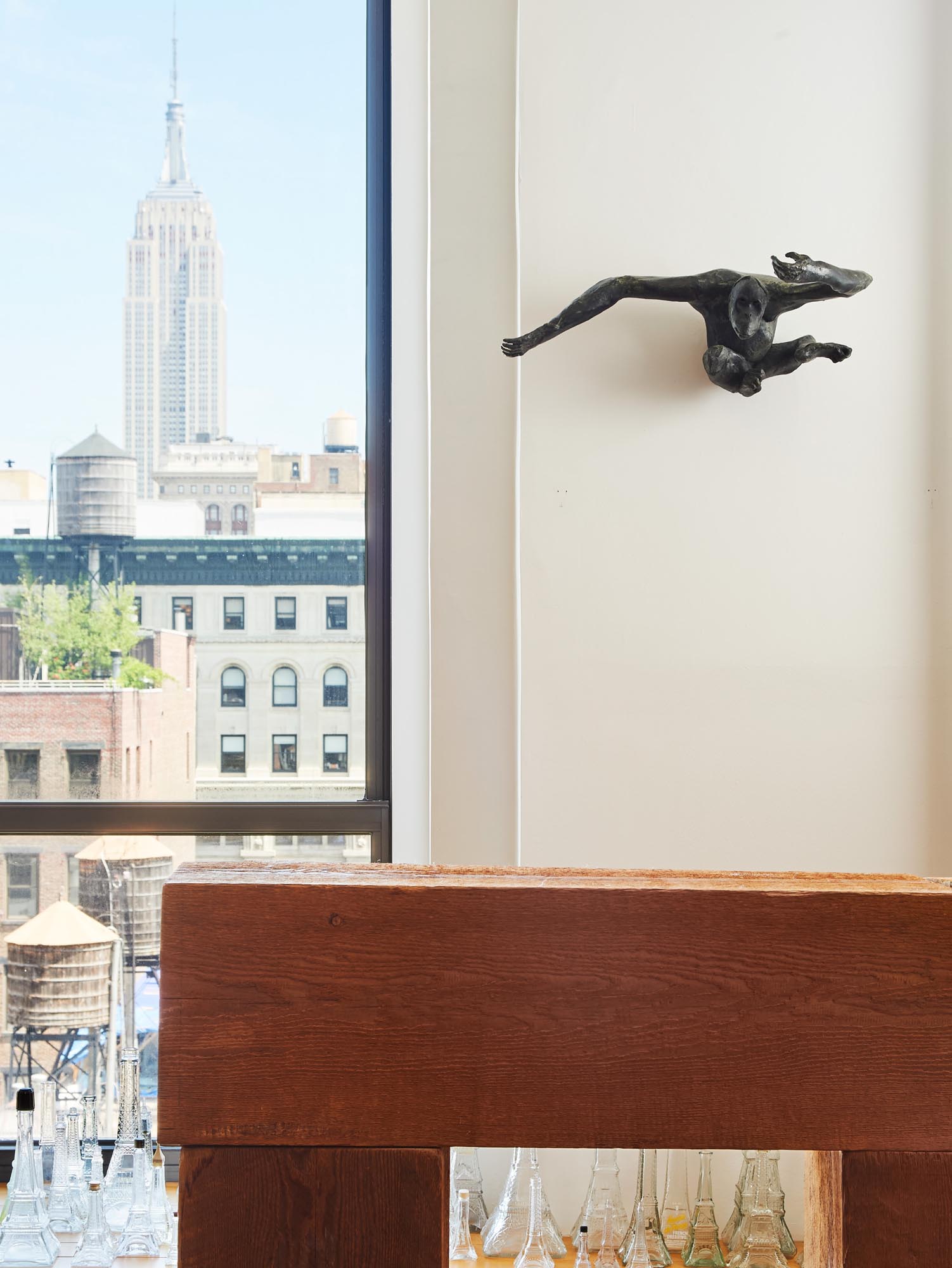New York
Behind Closed Doors
By Polly Devlin
Photographer Annie Schlechter

New York
Behind Closed Doors
Digital Edition 1.0
Text 2017 by Polly Devlin
Photography copyright by Annie Schlechter
All rights reserved. No part of this book may be reproduced by any means whatsoever without written permission from the publisher, except brief portions quoted for purpose of review.
Gibbs Smith
P.O. Box 667
Layton, Utah 84041
Orders: 1.800.835.4993
www.gibbs-smith.com
ISBN: 978-1-4236-4732-4
Acknowledgments
I am grateful for the constant support of the people who helped me with this book. There are many voices beneath the surface. The person to whom I owe the most is Annie Schlechter, whose unfailing enthusiasm in the face of my choice and unchoice of places never wavered; and for the unerring instinct that led her to photograph the things and scenes within those rooms that I particularly admired. We were in constant collaboration, often without consultation, and our ideas about images and layout hardly varied. Her detailed attention to design and layout has made the book what it is.
I owe my patient publisher Jo Christian a debt of thanks for suggesting the subject of the book, for her support and patience with my untimely haverings and for bringing it into being.
I am deeply grateful to my research assistants,
Judith Churchill who gave me tremendous help with calm efficiency, and Jacqueline Wasilczyk, who in spite of a full-time job, zoomed all over New York to checks facts and descriptions. I would like to thank Gail Lynch and designer Becky Clarke for their sustained and invaluable interest.
I am grateful to Eve MacSweeney, Features Director, and Hamish Bowles, European Editor-at-Large, both at American Vogue ; Mitchell Owens at Architectural Digest , and Allegra McEvedy and Scott Lauer for their helpful suggestions.
I thank Ben Brantley for his illuminative contribution; Chris Cahill, the Executive Director at the American Irish Historical Society (in its fine building); Paula Cianci, Awards and Events Officer, Cultural Services of the French Embassy who was considerate beyond duty. Edward C. (Ted) Goodman at the Avery Architectural and Fine Arts Library at Columbia University helped this complete rookie to find her way around his wonderful library.
On a more practical but equally invaluable level I owe more than I can say to Judith Churchill for her hospitality while I was in New York and to Serena Bass, Susanna Moore and Susan Forristal, who were generous and companionable throughout my endeavors there. I owe Alex and Alannah Cochrane thanks for the use of their wonderful boathouse, where some of this book was written.
In London I am grateful to Hannah Encke, Redha Debbah, Fiona Golfar and to the inspirational Carmen Callil, who from the conception of the book was unyielding in her opposition to the whole project and thus gave me the determination to carry on.
Most of all I would like to say thank you to all the owners of these places I have written home about. They were unfailingly kind, companionable and hospitable and apparently unfazed by my endless inquisitions. I hope I have done their places justice.
The Bowerbirds
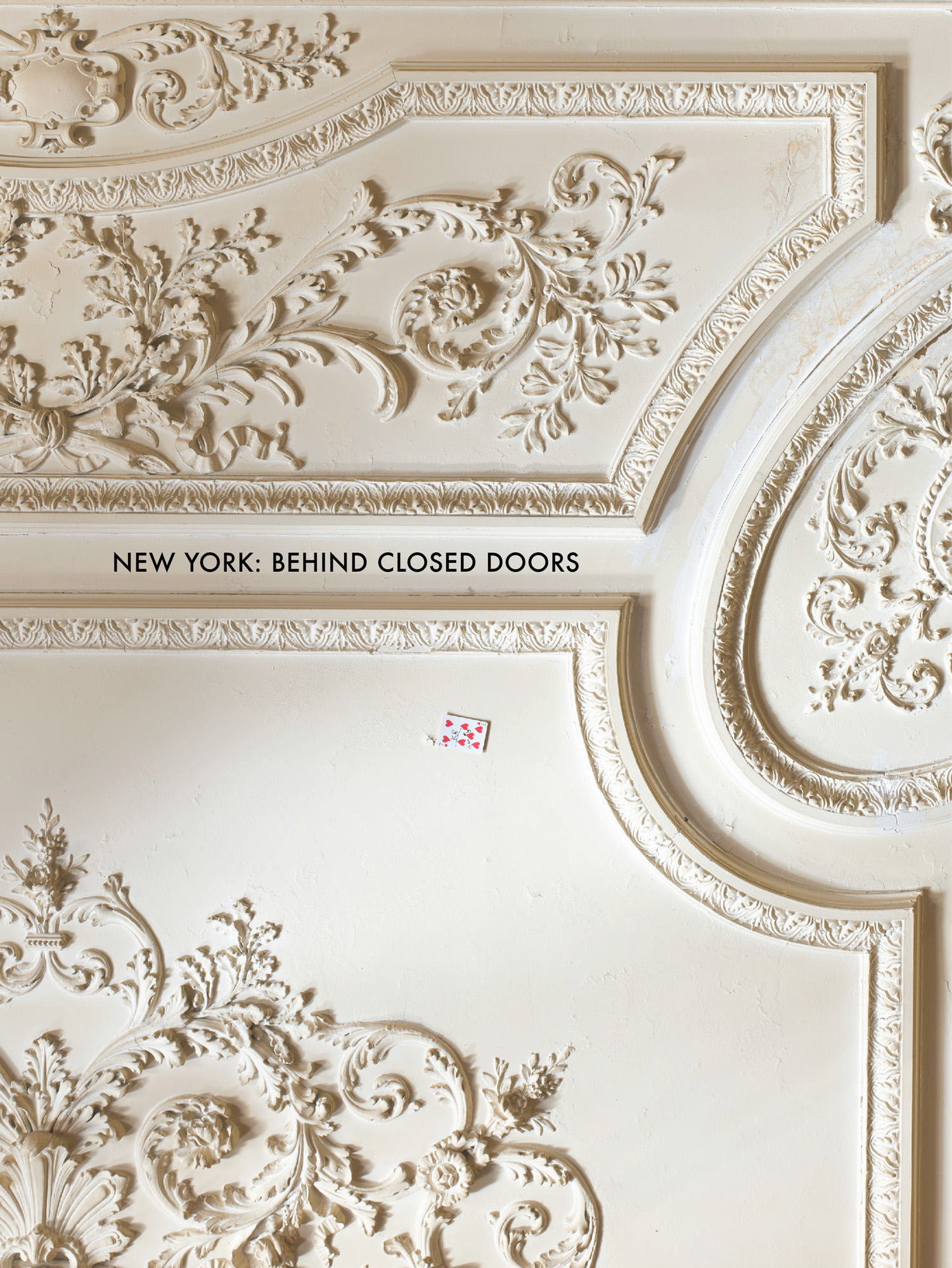
Kenneth Jay Lanes apartment in Murray Hill: the salon ceiling, with a playing card spun up there by a magician many years ago.
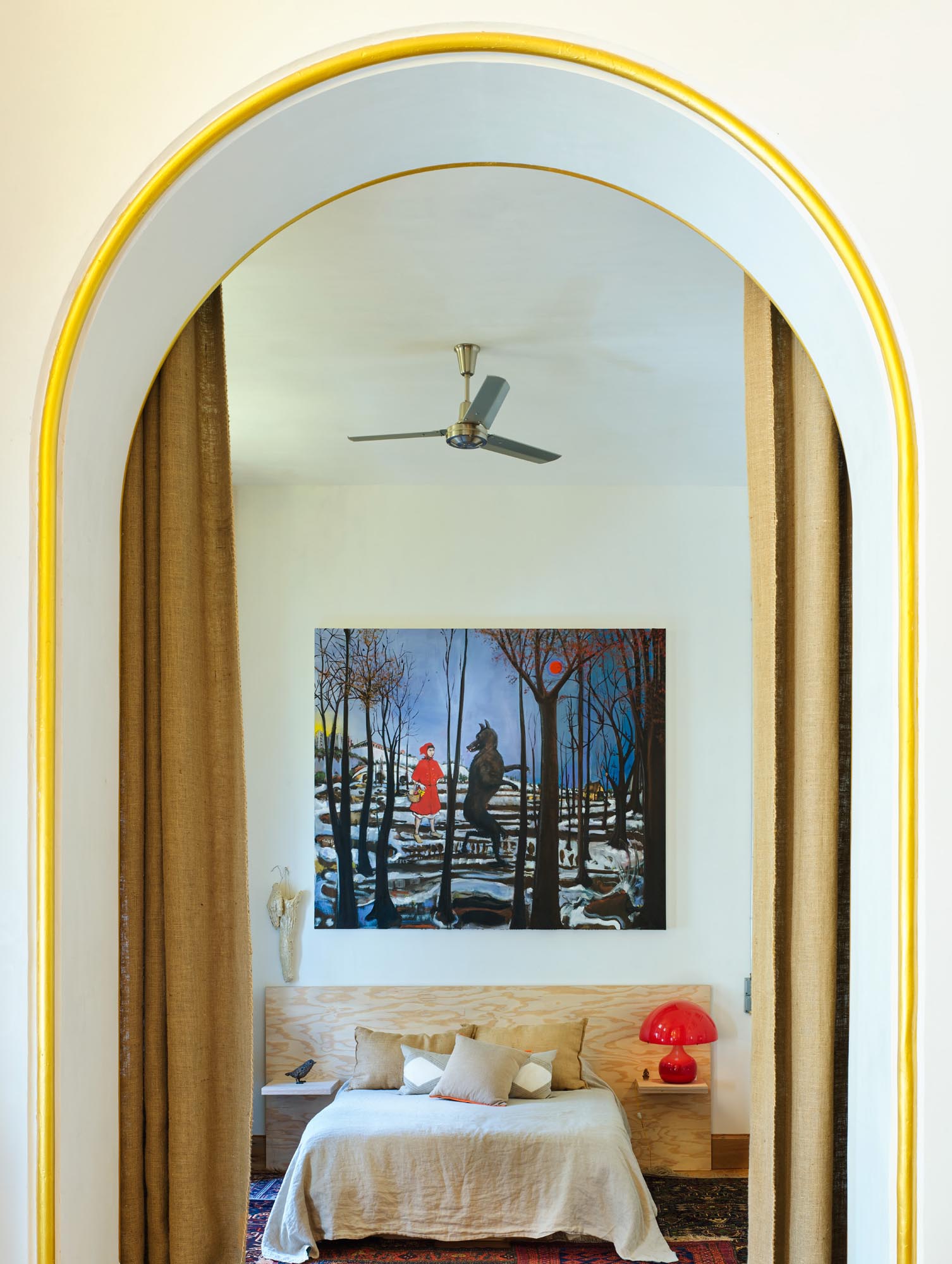
Ugo Rondinones bed, Red Riding Hood and the Wolf, by Verne Dawson.
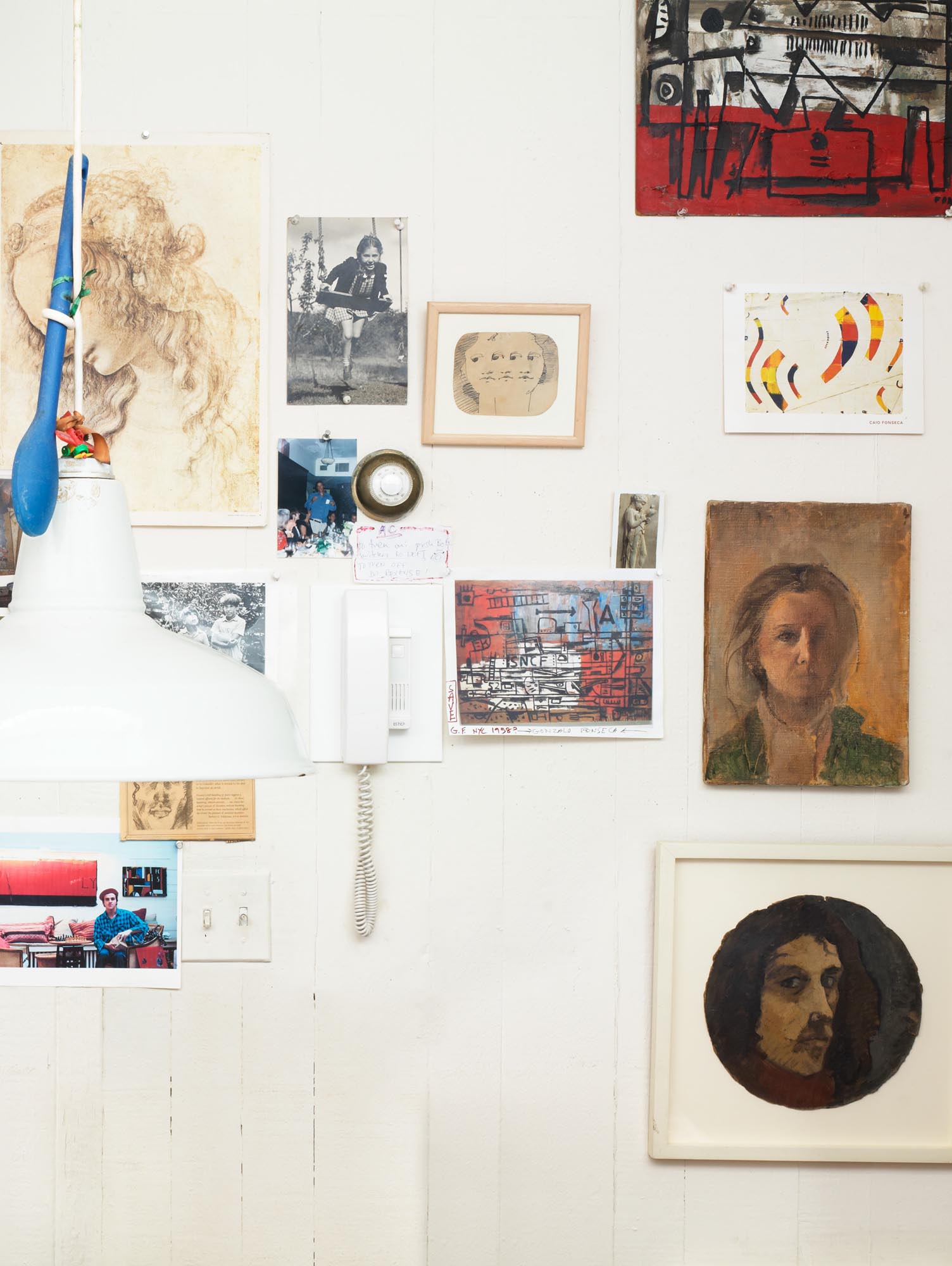
A wall in the Fonseca family house in Greenwich Village
This book is called Places to Write Home About because my only criterion for choosing these apartments, lofts, studios and houses is that I like them so much I want to tell other people about them. They are fired by imagination and created by people who refuse to live in a narrowly functional world; they know that creativity and imagination are essential to our lives.
There is something else. The most important future source of historical information about how some people live in New York today is in books like this and certain magazines. In 1848, the great English historian Lord Macaulay wrote, Readers who take an interest in the progress of civilization and of the useful arts... will perhaps wish that historians of far higher pretensions had sometimes spared a few pages from military evolutions and political intrigues, for the purpose of letting us know how the parlors and bedchambers of our ancestors looked.
So here we are, with no pretensions, in the parlors and bedchambers of artists and writers and garden designers, jewellers and professional decorators, photographers and art dealers, architects and fashion editors in short, the ordinary people of New York in different niches of the city, who opened up their domestic arrangements to show their ways of living idiosyncratic, curated, aesthetic, unique, and also spontaneous, unrehearsed and everyday. Their places are never just stationary backdrops they are provocative presences that elicit interaction, conjured up by people who know that living gracefully does not require attempting the impossible,
In doing this I am merely following in the footsteps of great observers and writers: Mario Prazs masterly An Illustrated History of Interior Decoration , published in London in 1964, was both a love letter and a breakthrough in arousing interest in the art of interior decoration. Peter Thorntons Authentic Decor: The Domestic Interior 16201920 (1984) and Charlotte Geres Nineteenth-Century Decoration: Art of The Interior (1989) were seminal. And, of course, the alluring magazine The World of Interiors , which first appeared in 1981, was a revelation to many though, I have to say, my own reaction on seeing it was, Well! About time too.
Because I grew up in 1950s Northern Ireland, where the decorating ethic in all its fine completeness was Kitchens is Buff and Landings is Brown, where the concept of collecting meant the saving of small pieces of string and brown paper, and where beauty was grimly regarded as an Occasion of Sin, I craved ornament. In The Merchant of Venice , that passionate play about the weights and measures of the heart, Bassanio sighs, The world is still deceived by ornament... the guiled shore To a most dangerous sea. Indeed, indeed, and I hoisted my sail and set out on that sea years and years ago and have now lost sight of the shore. But I dont think Ive been deceived. Ive been delighted and enchanted.
All my adult life I have contrived to live in houses which, crammed with the fruits of my collecting addiction, I think and hope are beautiful if somewhat disconcerting to any minimalist and I have always been obsessive about looking at interiors all over the world, and sometimes writing about them. I hold that making your own environment beautiful is as valid a work of art as any piece of writing, or painting or sculpture; we should approach decoration in the way that we approach the other arts. Yet the handiwork, taste, inspiration and labor that goes into composing a pretty room is too often regarded as happenstance. Women have done it throughout the centuries. Edith Wharton wrote about this; she thought of houses and environments as provocative presences and wrote of how decorating her houses and the creativity involved was essential to her, an act of self-definition, a way of finding her voice. (She was a dab hand at description. The drawing room walls, above their wainscoting of highly varnished mahogany, were hung with salmon-pink damask and adorned with oval portraits of Marie Antoinette and the Princesse de Lamballe. In the center of the florid carpet a gilt table with a top of Mexican onyx sustained a palm in a gilt basket tied with a pink bow. But for this ornament, and a copy of

